We've all heard the saying, "Curiosity killed the cat," - but what about when curiosity leads our canine companions to explore the world of litter boxes? Yes, you read that right! Dogs have a knack for sniffing out the most unexpected places, and the litter box is no exception.
Pet parents to both cats and dogs have probably encountered this quirky situation. Your precious pup, driven by an unquenchable sense of adventure, decides to investigate the litter box – much to your surprise and perhaps dismay. What causes it, and how can it be avoided?
Hold onto your leashes because, in this post, we will share how to keep dogs out of cat boxes and keep your dog from venturing into the forbidden territory of the cat's litter box. More importantly, we'll equip you with practical strategies to prevent this peculiar behavior and ensure a harmonious coexistence between your four-legged friends.
How To Keep Dogs Out Of Cat Litter Box
A dog eating cat poop in small amounts is usually okay. However, there are some risks involved. These include an increased chance of internal parasites and a possible intestinal blockage caused by clumping litter. Therefore, it's advisable to discourage dogs from eating cat feces. Here are some effective methods for dog owners to keep their dogs away from the cat's litter box:
Change The Location
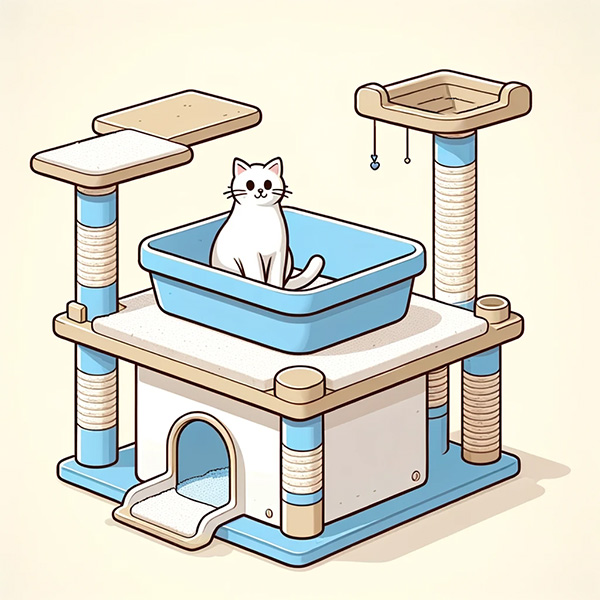
Consider moving the cat litter box to a spot that's easily accessible to your cat but less so for your dog. Cats are natural climbers and jumpers. Utilize this feline skill to your advantage by placing the litter box on a higher surface your dog can't reach! Consider using a sturdy shelf, cabinet, or cat tree as a designated spot for the litter box. Make sure the cat box is securely anchored to prevent any accidents. Apply the same approach to keep cat food out of reach as well!
Install A Litter Box With A Dog-Proof Entry
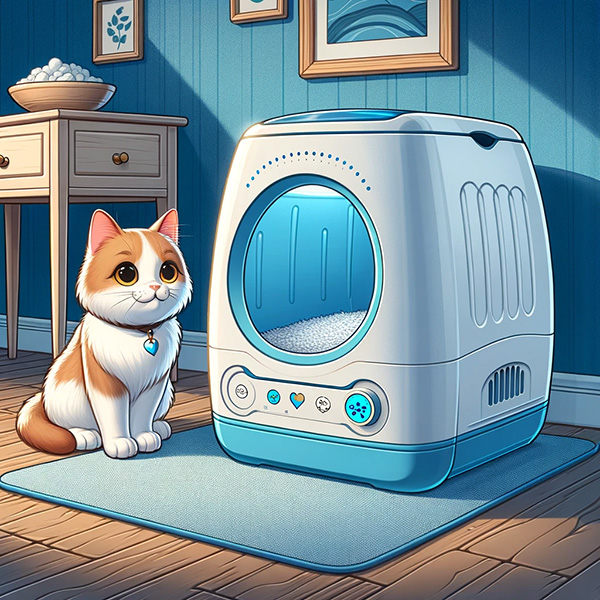
Specialized cat litter boxes with narrow, cat-friendly entrances are available. The cat door is designed to prevent dogs from accessing the litter box while allowing cats to enter comfortably. Investing in one of these boxes can be an effective solution. Typically, a sensor on the cat door on the litter box keeps the door locked unless it is triggered by a matching sensor tag on the cat's collar. This tech-fancy, dog-proof litter box is a unique way to restrict a dog's access to the litter!
Use A Covered Cat Box
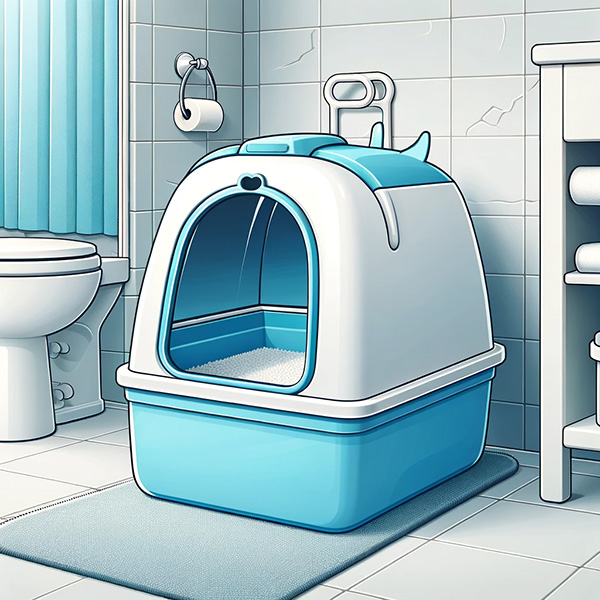
Covered litter boxes make a great dog-proof litter box, although their suitability depends on both your cat and dog. A covered litter box features a hood or lid, offering an extra protection layer. It's essential to ensure that the entrance to the covered box is elevated sufficiently to discourage your dog from accessing it. While most cats can easily enter and exit through the entrance, dogs may face more difficulty. However, adding a cover to your cat's litter box will be more effective in deterring larger dogs than smaller dogs. It relies on there being a significant size difference between your dog and your cat, and with a small dog breed or a large cat, this isn't always the case.
Create A Dog-Free Zone
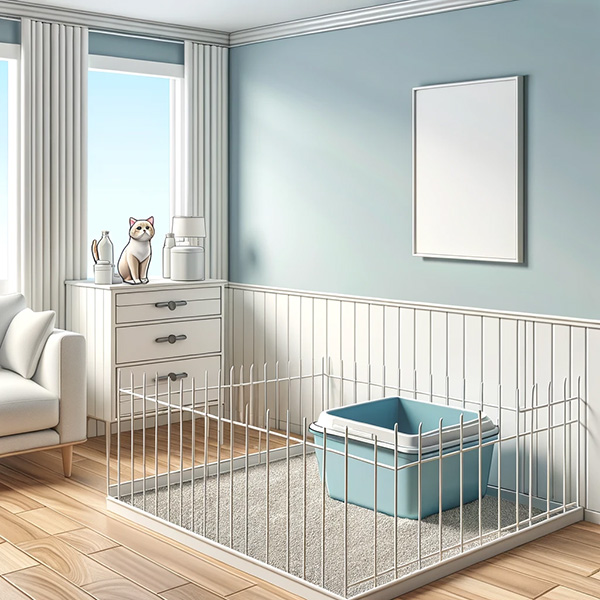
Designate a specific area of your home as a "dog-free zone" where only your cat is allowed. Ensure this area is inaccessible to your dog. Install a cat door, pet gate, or baby gate with a cat-sized opening to create a barrier. Place the litter box in this space to ensure your cat has uninterrupted access. Be sure that the cat door is small enough that your cat can enter, but not a smaller dog breed! Some pet owners choose to use a door chain to ensure that the door or pet gate can only open part way - enough for cats to slink through in their unique way, but not most dogs.
Use Training Commands
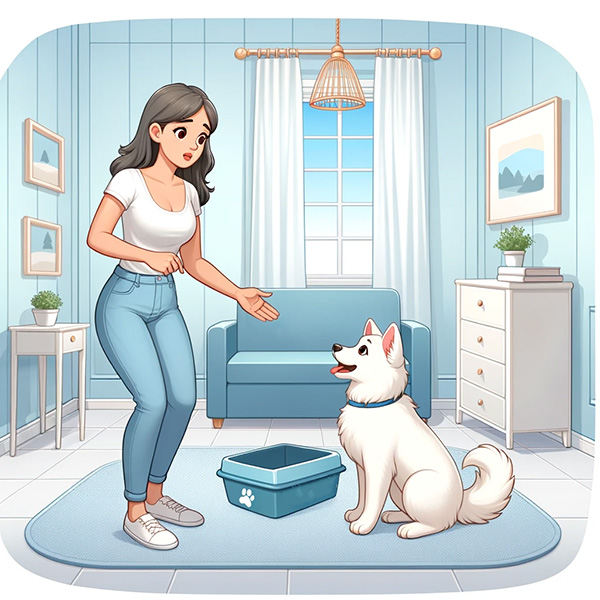
Train your dog to respond to commands like "leave it" or "stay away" when they approach the litter box. Consistency is key in reinforcing these commands. Reward your dog with treats and praise when they obey, and correct any undesirable behavior calmly but firmly. These commands will be useful in many ways other than just deterring your dog from eating poop. Dogs are natural scavengers and frequently like to investigate items that could be dangerous to them. An obedient dog is more reliable than trying to dog-proof the world.
Use Litter Box Furniture
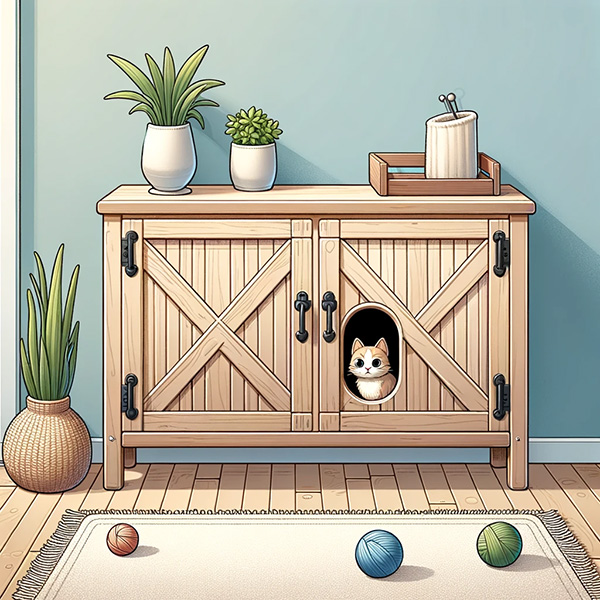
Litter box furniture is a stylish solution that not only conceals the litter box but also keeps it out of your dog's reach. These pieces often have cleverly designed entrances that allow your cat to enter easily, while the height deters a dog from trying to access them. Cats typically have no trouble navigating the entrance, but dogs will find it more challenging. You can use this type of cat furniture to block access to your cat's food as well!
Clean Your Cat's Litter Box Regularly
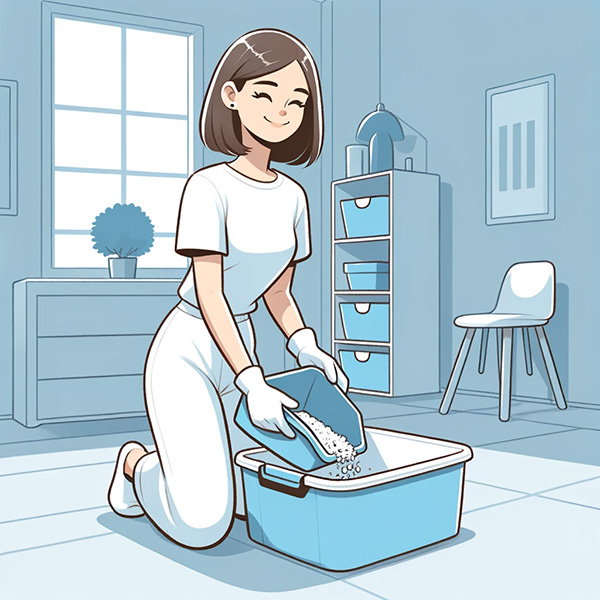
Maintaining a clean litter box by scooping waste daily, especially your cat's stool, can help keep your dog away from your cat's litter box. Replace the cat litter as needed. A fresh and tidy litter box may be less appealing to your dog, reducing their interest. To further discourage your dog from approaching the litter box, consider using odor-control products designed for pet litter. These can assist in concealing any lingering smells and rendering the area less appealing to your dog.
Use Deterrents
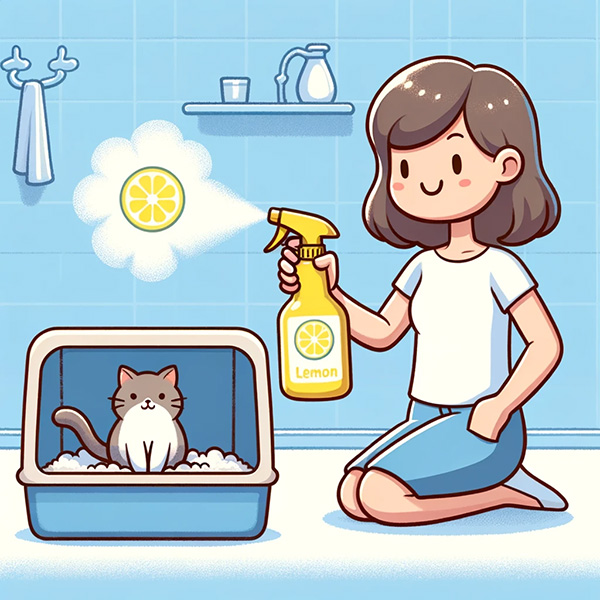
Dogs are highly scent-driven animals. Various pet-friendly deterrents on the market can help discourage your dog from approaching the litter box. You can use scent deterrents around the litter box area that are unpleasant to dogs but not bothersome to many cats. For example, some dogs dislike the smell of citrus, vinegar, or bitter apple. Spraying these scents around the litter box may deter your dog.
Use A Self-Cleaning Litter Box

Aside from enclosed litter boxes, robot litter boxes are great dog-proof litter boxes. Robot litter boxes feature a self-cleaning mechanism that automatically rakes or scoops waste into a separate compartment after your cat uses the box. This automatic cleaning process means less exposed waste for your dog to be attracted to. In addition, your dog may find the noise and movement of the litter robot intimidating, which can serve as a deterrent. They may learn to associate the cat litter box with an unpleasant experience and avoid it.
Why Does My Dog Eat Cat Poop?
You may puzzled by why does my dog eat cat poop? Cat poop can have a strong odor and taste that some dogs would find appealing. Dogs possess a sharp sense of smell and taste. Even though cat poop has a foul smell to humans, a dog may be drawn to the scent and flavors in cat poop because it smells like cat food to them.
While in some cases eating cat poop is normal dog behavior, your dog may be attracted to cat poop because they are seeking nutrients that their diet may be lacking. Cat poop can contain undigested protein and other nutrients that a dog may find enticing. Some dogs are doing it for attention. If a dog realizes that eating cat feces gets a reaction from their owner (even if it's negative attention), the behavior may continue to garner attention.
